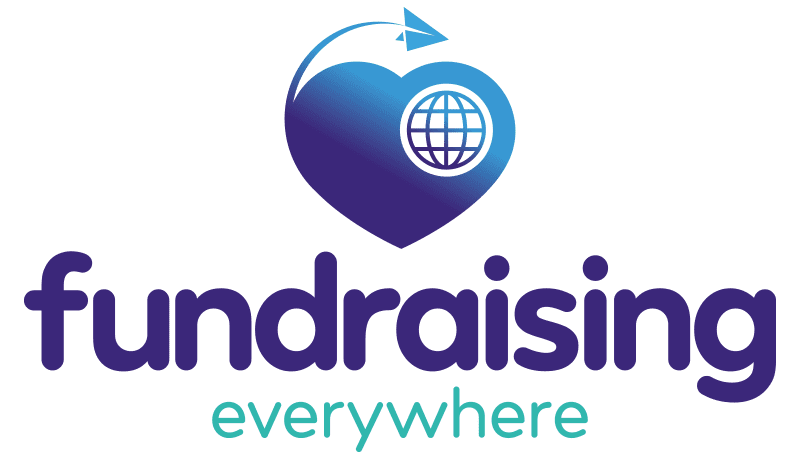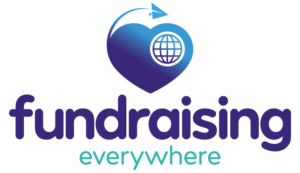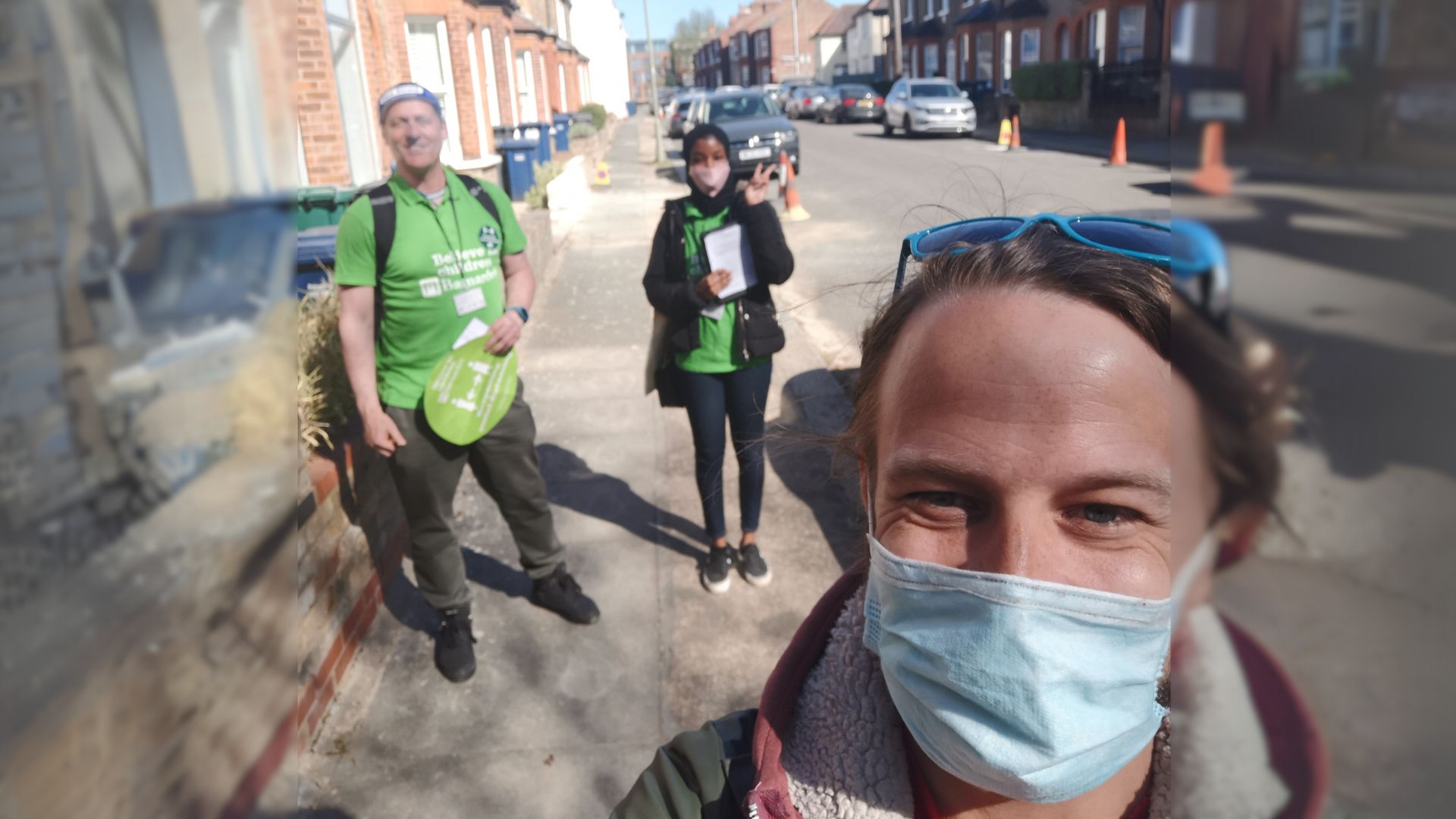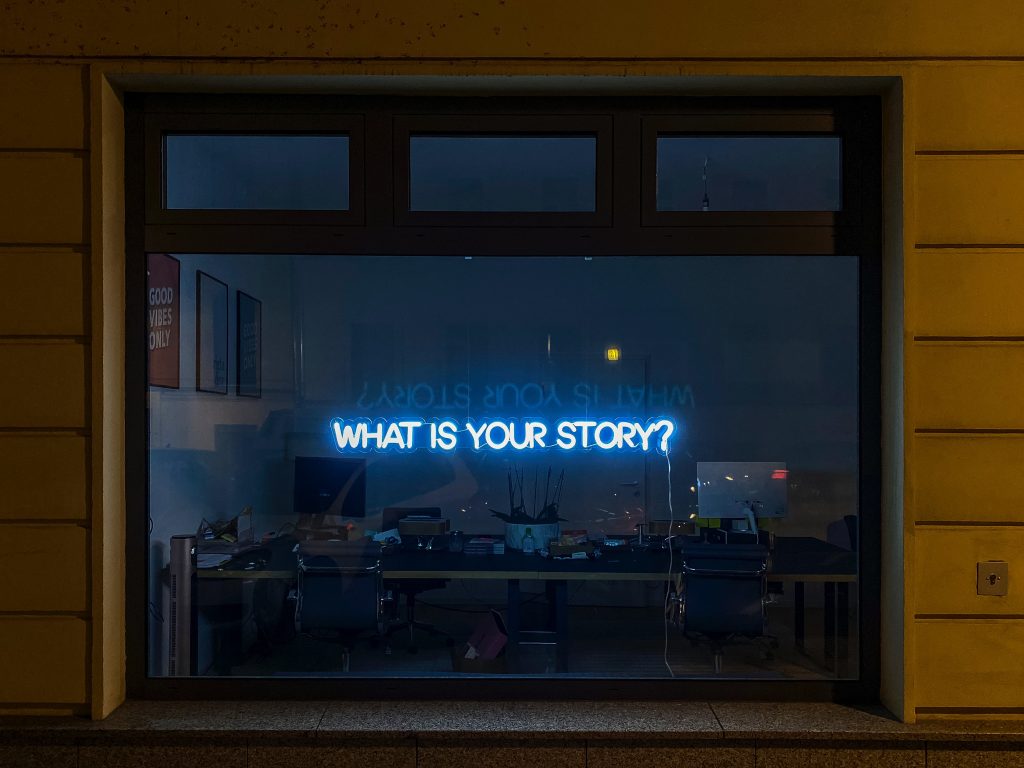
Written by Jo McGuinness MInstF(Dip), Head of Philanthropy & Partnerships at Children 1st
A year ago, I was 2 months into my current role after almost a full year of redundancy, job hunting, interim work and a general feeling of being unsettled and unsafe. I had finally been fortunate to find a role that provided me with familiarity – working with people I had worked with previously so I could feel safe, whilst doing what I loved.
My experience of intensive and stressful job hunting has stuck with me, and in my current role I feel a responsibility and desire to improve the recruitment process as much as is within my power – because, why not?
At Children 1st, we hadn’t been able to successfully recruit for a few roles before I started, so took time to review the existing process and consider what improvements could be made. We then went out in April 2022 with seven roles and filled them all.
Six of the post holders are still in post, with one who left retraining as a teacher. Before Christmas we refilled that post, using much of the same improvements to the process which have become standard within the Fundraising team.
Deciding what to change
When reviewing the current process, I spent time reflecting on what had been the main points of frustration for me as a job seeker.
- Not knowing the people behind the process.
Of 31 applications I had applied for, only 4 offered informal calls with recruiting managers. Whilst 13 did offer calls with recruiters, those conversations are never as insightful as they weren’t with the person you’d work with/under. - Unclear expectations and grading.
I was never sure how I would be graded against other candidates. Criteria was never shared (before or after interview), and some feedback received could be viewed as somewhat problematic. - Lack of communication and feedback.
Of the applications submitted that didn’t take me to interview, half didn’t let me know I was unsuccessful, I just got radio silence. One role took 12 weeks to let me know I was unsuccessful. As a job seeker this was both disheartening and felt like my time and effort wasn’t valued.
What was especially frustrating was that each of these issues can be improved with a little bit of thought and effort.
Feeling safe
Being honest about the current external climate and how that might be affecting candidates was a huge consideration. When I was job hunting it was against the background of easing out of the pandemic and whilst we aren’t back there, the cost-of-living crisis and general bin-fire state of things around us does cause feelings of insecurity for job hunters.
There are simple things recruiting managers can do to help entice job seekers to take the leap, and mainly its by being a bit more human…
- Showcase the fact your organisation is made up of individuals with personalities by filming informal videos, offering friendly conversations to connect with candidates and provide as much info about the organisation and the role as possible via different methods.
- Detail six month expectations and how success is measured in the candidate pack – be upfront with expectations so candidates can make an informed decision.
- Be transparent and share relevant policies, for example your maternity, menopause, sickness, and annual leave policies. This way candidates can check if your organisation aligns with what matters to them.
- Be honest about what’s working and where challenges are. Candidates aren’t stupid, and no organisation is without challenge. Being open about what needs improving will convey authenticity to candidates and help them to understand what the risks are in making the move.
- Be clear about what the induction period looks like and include the induction plan if you can. (This is on our list for next time!) Candidates want to know they will be supported when starting something new.
- Explain your salary banding. If you have a £10k salary band, provide clear explanation as to someone be hired at the bottom vs the top so candidates know where they stand.
Embracing flexibility
One key factor when overhauling our recruitment process was really looking critically at what we could be flexible on. We have to appreciate that societies expectations have shifted since the pandemic, we aren’t returning to the old way of working, ever.
We must embrace flexibility such as remote-based working (and FYI, that isn’t new) and ensure we aren’t viewing pre-pandemic times with rose-tinted glasses. I feel concerned when I hear leaders make comments like ‘we were much more connected before 2020’ or ‘our culture has suffered because of remote working’.
Creating connection and culture are things you can do regardless of location – you just need to be intentional about it. Make time. Expend effort. We can’t rely on water cooler chats or shouting across desks to form culture – because that wasn’t good enough back then, and now a lot of fundraisers have woken up to the fact there’s another way. Organisations need to wake up too.
If you must have an office presence, be clear with candidates on:
- The why – how does being in an office together add value that isn’t delivered remotely?
- How you will make office working more enticing e.g. support with travel costs, allow travel time within work hours, allowing dogs in the office.
Understand that if hybrid working or being office based is essential, it will limit your pool of candidates and affect existing workers in terms of personal preference, accessibility, cost and more.
Influencing upwards
Suggesting change can be tricky, especially if the powers that be above you aren’t convinced things need changing in the first instance. We are hearing from across the sector that recruiting fundraisers is tough. Many organisations are having to go out to recruit more than once for the same role, so we may find leaders with even the firmest of views start to be open to tweaks if it might help secure candidates.
- Try offering trial periods. We seem to feel quite concerned about changing recruitment practise, possibly because it feels formal and as legally there are elements that need to happen in the correct and proper way. But there is so much that can be flexed too. I spoke to our HR team who were willing to trial some changes on the understanding that I gathered feedback from candidates. That’s how we managed to do away with the incredibly annoying and candidate-unfriendly application form!
- Ask why – politely! Ask from a place of curiosity and willingness to collaborate rather than challenge. Frame questions to understand their perspective and be clear that you want to achieve change that you are both comfortable with. Sometimes it can help to find great examples out there in sector and come armed with evidence. Childrens Society and SOFii are two recent ones that are really framing flexibility and kindness to candidates well in their ads.
- Figure out what’s important and comprise on what’s not so. Have your own ‘must achieve, love to achieve and like to achieve’ list of changes. Go in firm with your musts, and flex on the rest. Its ok for change to take time – every step in the right direction is an improvement.
Remember, sometimes you might need to undertake small acts of quiet rebellion and seek forgiveness not permission!
From our experience, if you only do three things to make your recruitment practise more candidate friendly, please make it these:
- Run a critical eye over your JDs before going to recruit – remove as many person spec criteria as you can, remove red-flag phrases such as ‘hit the ground running’ and ensure it says exactly what you mean.
- Send the interview questions out in advance – you will get better quality interviews, AND you will be making the process much more accessible.
- Provide and seek feedback – candidates invest time and effort, and emotions, in partaking in our recruitment process. The least we can do is provide clear and useful feedback. And lets be humble, they know exactly how our process made them feel – so lets ask them. Once we know better, we can do better.
As recruiting managers let's not forget that we are being interviewed, too, and candidates are clearer than ever on what they want and need. We have to change, or we will be left behind.
This blog was part of an exclusive Members Clinic that Jo ran for Fundraising Everywhere Members. We hold Members Clinics every month with sector experts.
Want access to exclusive content like this, plus all our conferences & webinars to watch Live or On Demand?
Join charities like WWF, Scope, Friends of the Earth, Alzheimer's Research UK & The Children's Society and become a Member.

Written by Simon Scriver
The end of AmazonSmile
Amazon has recently announced that it will end its charity donation scheme, AmazonSmile.
It will end by February 20th with some financial assistance given by Amazon to help with the transition.
For the last 10 years, organisations have been able to link to Amazon and earn a small commission on any spending that came through your link.
Like an affiliate scheme, exclusively for charities. There’s no additional cost to you or the customer - it’s just a ‘reward’ that Amazon offers you for bringing them more business.
In theory, Amazon would also bring you new donors - those who found you by searching AmazonSmile - but in reality the chances of this happening were pretty slim.
While Amazon would have you think they’re super generous, the payment comes from their advertising budget - 0.5% is a cheap ad.
It’s one of the lowest-paying affiliate schemes out there.
Still, for many organisations, it’s been an easy win - a steady stream of commission earned from product links (think, for example, recommended books or suggested groceries).
Is this a good opportunity for charities to break up with these kinds of programmes?
Or can a well-used affiliate scheme provide a steady stream of additional income?
Where do you go from here? Even if you haven’t been using AmazonSmile, are the alternatives something you should be exploring?
Well, like everything in fundraising, it depends.
Personally, I think all charities can benefit from a smart partnership with a supplier that brings value to your audience. My first website, a Traveling Wilburys fansite when I was 17, generated a decent amount of monthly income by linking to a couple of music stores that stocked their then-hard-to-find music.
I would earn up to 20% of what people spent - an amount that spiked when George Harrison died and when Roy Orbison’s widow recommended my site.
These days, even Fundraising Everywhere has an affiliate scheme.
A well-placed link to a relevant product is what makes the virtual world go round.
As charities, we’re mindful of our ‘call-to-action’ within any writings, presentations and posts.
What is the logical next step our supporter is going to want to take after this interaction?
A request to donate or volunteer or subscribe is something we’re used to peppering into our communications, and those direct actions should always take priority.
But if that’s not appropriate or relevant enough, an affiliate link can be a perfect win-win-win.
This might be a link to purchase a book one your event speakers just recommended.
It might be a pet food of choice that you recommend to adopting families.
It might be a handy tool that so many of your service users have benefitted from.
It could even be Christmas cards.
Affiliate schemes are a fantastic source of income when the transaction sits logically within the work you’re already doing.
So where to now?
As we say goodbye to AmazonSmile, remember there are more generous solutions out there, like Give As You Live and easyfundraising.
And please do let us know if there are any particular platforms you’d like to see showcased at our FundraisingTech conference.
Also consider Amazon’s regular affiliate scheme Amazon Associates. This offers similar benefits to AmazonSmile but often pays more!
Or negotiate agreements directly with suppliers. These might even include exclusive discounts that you pass on to your audience.
Affiliate schemes can make for a good starter corporate partnership with no initial cost to the company. A relevant, transparent partnership can benefit everyone.
We think that the right partnership can change the world.
If you want to learn more about partnerships that can elevate your charity missions, join us at Corporate Partnerships Everywhere on March 16th 2023.
Corporate Partnerships Everywhere is brought to you in partnership with Remarkable Partnerships (of course!)

Written by Nikki Bell
We’re big on building things in the open and including you in our decisions. So this is our honest review of 2022 before we kick off things for 2023.
This might not be the most exciting read for many of you. But, for transparency, I want it to exist somewhere so you can see behind the curtain.
Before I get into the stats though, I want to say ‘thank you’.
We couldn’t have achieved any of this without you.
Whether you’ve joined as an attendee, have chosen to push your professional development forward with us as a member, shown your support on social media, or partnered with us as a sponsor; it’s all noticed and appreciated.
Thank you! We couldn’t have achieved any of this without you.
Speaker and event EDI: How did we do?
This is something we’ve kept a close eye on in 2022, especially as we’ve handed over more of our event curation to our community.
I’m so happy that we overachieved on our goals to represent people of colour (+15%), people from the LGBTQIA+ community (+24%) and gender representation (63% female / 32% male / 5% trans and non-binary split).
However, there is more to do.
Disabled speakers
We didn’t meet our goals for representation of disabled speakers* (-11%) and I would love to platform more new-to-the-sector fundraisers to make sure we’re hearing more new ideas.
Tracking EDI information
I’m also embarrassed to say that we only started tracking EDI information for attendees in 2022. Considering this is a core reason why Fundraising Everywhere was created, I can’t believe it took over 2 years for this requirement to click and I take full responsibility for that.
The data we do have on attendees is promising and reflects much of what we see in our speakers, with the exception of young people that are better represented within our attendees.
Similar to our speakers, however, our reach to attendees with disabilities is low with just 9% of the 444 responses given* saying they’d consider themselves to be disabled. Our current goal is to reach 19% so there is work here to be done.
How we want to improve in 2023
A priority for 2023 is to understand more about the disabled community within our own and what more we can do to support disabled people to engage with our work.
How we plan to do this:
- Understand more about disability within the UK charity sector; representation, how these people identify, and how comfortable individuals are in sharing this information.
- For new/young voices, utilise our Fresh to the Sector participants for shaping our work and featuring at our events.
- Work proactively with organisations and charities that work with the disabled community.
- Work with people with lived experience, including existing team members, to improve our communications and activities.
Speaker pay
For those of you that have been with us since 2019, you may have noticed the amount we have paid out to speakers has gone down. This is a combination of fewer speakers in 2022 compared to 2021, and many speakers choosing to waive their fees to provide bursaries to events.
*our EDI form is not compulsory. Data reviewed and reported are from people that chose to tell us about their experience.
I’m so happy that we overachieved on our goals to represent people of colour (+15%), people from the LGBTQIA+ community (+24%)
Team diversity
We’re a team of only three people so I don’t want to go into specifics to protect the privacy of my colleagues, but I will confirm that non-visible diversity is strong on team FE.
However, we need to improve visible diversity in the team.
I worked with the belief that using our networks and platform to support the growth of people in our sector was working in an equitable way to create opportunities. However, I understand and recognise that without that representation in the team itself, we are missing out on big talent opportunities - as well as the insight that helps us approach our projects and marketing in an inclusive way. We want to improve this in 2023 and it’s a big priority for us.
In January 2023 we will be reviewing our EDI goals and updating them where needed.
Events and webinars
2022 was a varied year for Fundraising Everywhere events and we’re constantly learning and adapting. Your needs as a fundraiser are constantly changing and it’s important we don’t churn out the same topics and speakers every year for the sake of fitting into a calendar.
It’s exciting to see attendee numbers go up (and that you’re coming back to re-watch after event day!), so we want to make sure that you’re getting what you need at the right time.
Feedback and acting on that feedback will continue throughout 2023 and we’re excited to have you on that journey with us.
The hits
Our top three conferences* in 2022 (in no particular order) were the:
Top webinar topics in 2022 (in no particular order) were:
- Making TikTok Work for Your Charity
- Trusts & Grants Fundraising During the Cost of Living Crisis
- Charities and NFTS: the next step for online fundraising or digital distraction?
Our full programme of 2023 conferences are up on our website so you can book onto those right away. We have kept a couple of conference gaps for anything responsive that pops up and our free monthly webinars are available on a rolling monthly basis.
*based on attendee numbers.
Our top three conferences in 2022 (in no particular order) were the Individual Giving Conference, Legacy Fundraising Conference, and Grants and Major Donors Conference.
The events we need to look at
We tested the very first ‘open mic’ fundraising conference, Over To You, in July 2022 to give a platform without ‘rules’ to people that had something they wanted to say. The content was exceptional, with challenges made and solutions given for improving pathways and inclusivity in our sector. But, attendance was really low. I’m talking under 20 people low.
We know it’s hard for fundraisers to justify taking time away from work when they’re not sure what they’re going to learn but it’s a real shame that an opportunity was missed to really dig into the problems in our sector and work collectively to fix them.
We still believe in this intention but we’ll change how we approach it in 2023 with more structure to support your decisions on where to spend your time.
You might also have noticed that the Small Charity Conference isn’t returning in 2023. This isn’t because we don’t cater for small charity employees - it’s because we don’t want to focus our support for these people into just one month.
Instead, every conference throughout 2023 will include support for small charities and there will be a specialist chat room for any representatives wanting to network and discuss the sessions. This is in addition to the exclusive free workshops held for Members every month throughout the year.
What’s happening in 2023
In short, we’re going to build on 2022’s successes and add more depth to make sure every fundraiser, everywhere, has everything they need to do their job.
In addition to training through our conferences, events and Membership, following extensive chats with our community, we will be launching projects to support our Manifesto.
Here are some other things to look forward to from team FE:
Improved event experience
Attendance to virtual events have increased since 2021 and we want to make sure that every time you log onto a Fundraising Everywhere event you’re completely blown away.
In 2023 we will be:
- Launching a speaker academy to make sure our speakers deliver the right content in the best way
- We’ll work to have event programmes confirmed three months prior to an event
- And, you’ll be able to access the event site and materials from the point of registration
We have already brought in ‘free-choice’ breakout rooms at our live events that enable you to chat with speakers and attendees after every session, certificates to track your progress, and in-person watch parties where you can network in real-life whilst enjoying the virtual conference together in a shared location. We’d love to see more of those in 2023!
As well as the above, we give you the opportunity to rate our conference sessions and give your feedback live so we can keep on improving after every event.
North America
A large part of our community has hailed from North America even from the early days; but the sessions we host and the times we host them aren’t accessible for our Canadian and American friends.
In May 2023, we will be hosting the first North American-specific fundraising conference, using our popular Individual Giving Conference as the topic, with local speakers, partners, and in a North American-friendly timezone.
We’re still in talks with businesses and individuals about co-leading this project (we want the event to be led and represented by local people) so watch this space…
Manifesto Projects
We launched our Manifesto in September 2022 and have spoken to many fundraisers and organisations since.
The final projects are yet to be finalised but it’s already clear that to build a better sector for fundraisers, not only do they have to be skilled and supported, they need to be led by leaders that know what they’re doing and do it in an ethical and empathetic way.
We’re planning a three-pronged approach that aims to support fundraisers through;
- Training, accountability and community
- Supporting their leaders with practical coaching and upskilling in the core leadership essentials
- and, interactive workshops that dig into sector challenges (which will produce support in whatever format is necessary).
We’re big on collaboration so we’re working on bringing in external experts, partner organisations, and even fully funding other people to lead on this work. So if you’re reading this thinking, ‘I like the sound of that’, please get in touch.
Growing our team
What better way to get new and exciting ideas by growing our team!
We’re currently recruiting for a Growth Marketing Executive and have plans to expand with customer experience roles in the future.
We’re investing in our current team by increasing their pay by 10% and working towards full implementation of a 4-day week that sees staff working 30hrs on a full-time wage.
If you’d like to join our team, please get in touch!
We encourage people from all communities to apply for jobs with us. We particularly welcome applications from Black, Asian and Minority Ethnic, disabled, male identifying, trans and young people because we want to improve representation of these groups in our workforce.
We’re currently recruiting for a Growth Marketing Executive and have plans to expand with customer experience roles in the future. If you’d like to join our team, please get in touch!
Giving back to our sector
In 2022 we trained 212 fresh to the sector employees for free, curating a programme of training from our events and webinars that covered the fundraising fundamentals.
We also held free 1:1 coaching calls and Q&A sessions to anyone that needed a bit of adhoc help.
We’re keen to continue this support into 2023 and want to make sure that what we offer and when is right for charities. Your feedback and ideas are much appreciated!
Growing our community
We listen to our attendees and Members. You are our eyes and ears of the sector.
What you tell us shapes what do do, who we platform, and what we provide.
To make sure we include as many voices as possible in these conversations we want to grow our Fundraising Everywhere community and weave you into our activity and curation at every opportunity.
There are many ways you can do this,
- Speak at our events (paid): Share your idea here.
- Join as a Member (individual or bring your whole organisation): Email mandi@fundraisingeverywhere.com.
- Join our team: Find our live vacancy here.
- Give us feedback: Email nikki@fundraisingeverywhere.com and/or fill in the forms during and after every event.
- Partner with us (we’re being selective with partner opportunities in 2023 - word got out about how awesome it is and we want to make sure our community receives majority non-sponsored content): Email nikki@fundraisingeverywhere.com.
Thank you again for everything. Now, onwards to 2023!












